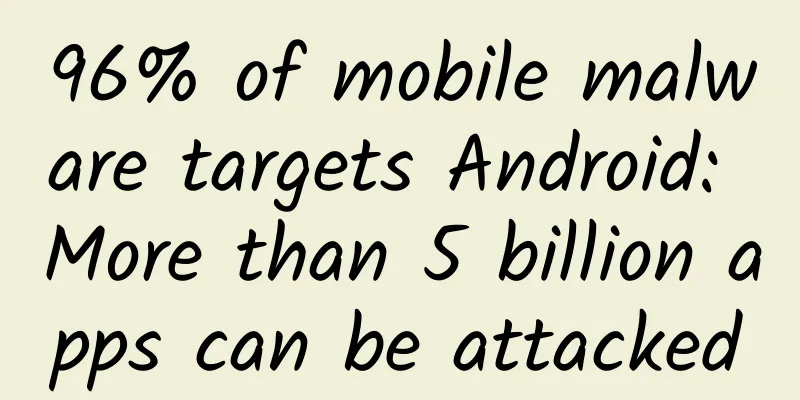A fitness blogger revealed that she had six uterine fibroids due to stress. Experts remind us: Uterine fibroids "prefer" these three types of people

|
Sports health blogger Zhou Liuye Zoey, who has 9.77 million followers on Bilibili, published a long article, revealing that she was diagnosed with six uterine fibroids due to excessive stress after dating her ex-boyfriend for six years. "I wasn't surprised at the time, but I just felt it was particularly ironic because the relationship lasted for six years and I had six fibroids in my uterus... The doctor said that considering my diet and daily routine were very healthy, it was probably related to stress and anxiety." The remarks sparked discussion among netizens. Some netizens thought that it was a bit far-fetched to attribute the illness to the ex-boyfriend, while others believed that the blogger had been under long-term mental stress in a repressive relationship, which was directly related to the onset of the disease. What causes uterine fibroids? First of all, we need to understand what kind of disease uterine fibroids is. Copyrighted images from the gallery, unauthorized reproduction, please contact the original author The uterus is an organ with a cavity. The cavity is an inverted triangle that is wide at the top and narrow at the bottom. Both sides are connected to the fallopian tube cavity. The uterus has four pairs of ligaments, containing smooth muscle and connective tissue. The structure provides a favorable environment for the growth of uterine fibroids. Uterine fibroids are the most common benign tumors in female reproductive organs. Since uterine fibroids are mainly formed by the proliferation of uterine smooth muscle cells, with a small amount of fibrous connective tissue as a supporting tissue, it is more accurate to call them uterine leiomyoma. It is also called uterine fibroids for short. Most women with uterine fibroids do not experience obvious symptoms, so the vast majority of patients discover they have uterine fibroids during physical examinations. Why do you get uterine fibroids? The etiology of uterine fibroids is still unclear and may involve complex interactions among normal myometrial cell mutations, sex hormones, and local growth factors. According to a large number of clinical observations and experimental results, uterine fibroids are a hormone-dependent tumor. Estrogen is the main factor that promotes the growth of fibroids. Some scholars believe that growth hormone (GH) is also related to the growth of fibroids. GH can promote mitosis and promote fibroid growth in coordination with estrogen. It is speculated that human placental lactogen (HPL) can also promote mitosis in coordination with estrogen. It is believed that the accelerated growth of uterine fibroids during pregnancy is related to the high hormone environment during pregnancy, and HPL may also play a role. In addition, ovarian function and hormone metabolism are controlled and regulated by higher nerve centers, so the activity of nerve centers may also play an important role in the onset of fibroids. Uterine fibroids are more common in women of childbearing age, widowed women, and women with unbalanced sexual lives. Chronic pelvic congestion caused by long-term sexual dysfunction may also be one of the causes of uterine fibroids. In short, the occurrence and development of uterine fibroids may be the result of the combined action of multiple factors. When is surgical intervention necessary? Most uterine fibroids are benign. After the first discovery, you only need to have an examination every six months to a year. Don't worry too much. Most patients are asymptomatic. The doctor will determine whether surgery or drug treatment is needed based on your examination results. Doctors point out that clinical intervention is required only when uterine fibroids occur in the following four situations: In the first case, intervention is required when uterine fibroids grow to a certain size and cause increased menstrual flow, prolonged menstrual cycles, and anemia. In the second case, when the fibroids compress the bladder or rectum, causing frequent urination or constipation and affecting the quality of life, intervention is needed. In the third case, the fibroids grow in the uterine cavity and affect pregnancy, or grow in the uterine cornu and affect the function of the fallopian tube, which requires intervention. The fourth situation is malignant uterine tumor. If the fibroids are found to be growing rapidly or there are abnormalities in blood tests, it may indicate that there is something wrong with the fibroids. The doctor will provide a surgical plan based on the situation. Uterine fibroids "prefer" these 3 types of people According to Shi Jinqiu, deputy chief physician of the Third Affiliated Hospital of Shenzhen University (Luohu Hospital), clinical data show that uterine fibroids are common in women aged 30 to 50, and it is very rare for women under 20 to have uterine fibroids. As of now, it is estimated that the prevalence of women of childbearing age can reach 25%, and statistics show that the incidence rate is as high as more than 50%. Among them, the incidence rate of pregnancy complicated with uterine fibroids is 0.1% to 3.9%. These data do not include those patients who have not been discovered and have not been admitted to the hospital for examination or treatment. At the same time, there are three types of women who are more likely to develop uterine fibroids. 1. Obese people are more susceptible to uterine fibroids The appearance of uterine fibroids has a lot to do with whether the estrogen level in the body is stable. When the body secretes more estrogen, it will provide power for the growth of uterine fibroids. More estrogen is equivalent to a "promoter" for uterine fibroids, and the chance of developing uterine fibroids increases. When women become obese, their endocrine system will be out of balance and estrogen secretion will be more active. In this case, they are very likely to suffer from gynecological diseases, and the probability of uterine fibroids will be greatly increased. Therefore, obese people are more likely to be "favored" by uterine fibroids. 2. Uterine fibroids "prefer" women with high stress I don’t know if you have noticed that society now places very high demands on women. They must be able to make money, take good care of children, and take care of the family. The double pressure of family and work often leads to depression in women. If you don’t know how to regulate your emotions, you will always be in a negative mood, which can easily lead to endocrine disorders and hormonal instability, which can then induce disease. 3. Uterine fibroids "prefer" women with menstrual disorders Menstruation is a woman’s “good friend”. Normally, it occurs once a month, but some women only have their period once every two or three months, or twice a month. Long-term menstrual disorders will invisibly increase the risk of uterine fibroids. Although uterine fibroids are benign tumors, they may also have adverse effects on the body, so preventive measures must be taken. Women should pay attention to controlling their weight and emotions in their daily lives, keeping their weight within a reasonable range, and having a happy mood can reduce the probability of uterine fibroids. In addition, you should also pay attention to personal hygiene, but you should not over-clean, otherwise it will be harmful to your health. In short, women must take good care of their uterus. Only by taking good care of it can it give you good "feedback". Comprehensive sources: Chinese Medical Association, Science Popularization China |
Recommend
Soy milk and milk, which one is more nutritious? How to choose?
Author: Yu Liang, registered nutritionist in Chin...
Revealed! How does a plastic bottle bury hundreds of lives?
A hermit crab that found a bottle of snail shells...
How to increase the effectiveness of new media marketing promotion by 3 times?
Recently, I have received a lot of feedback from ...
Do you feel knee pain when you exercise? Beware of meniscus wear! Don’t do these actions again →
What is the meniscus? What is its function? What ...
How far are we from domestic brands launching OLED TVs?
About ten years ago, LCD TVs sounded the clarion ...
How to unleash the power of Moments advertising?
Since joining Tencent Wealth Management a year ag...
How much does it cost to make the Tieling baking utensils mini program? Tieling baking utensils applet production price inquiry
There are two types of Tieling baking utensils We...
Excessive sun protection may induce osteoporosis? Scientific sun protection can keep you beautiful and healthy
Umbrellas, sunscreen, sun-protective clothing, su...
Tianxing Compound Interest Wine Bureau (Monthly Edition) Value Investment Concept
Tianxing Compound Interest Wine Bureau (Monthly E...
7 major processes of live broadcast operation planning in 2020!
In 2020, live streaming e-commerce has been boomi...
Smart routing: the battle for the unclear “entrance”
The smart router market has always been interpret...
up to date! Traffic rankings of 39 popular information flow platforms!
The December data of major popular information fl...
E-commerce market trends and product selection in June!
Which categories are hot-selling in various chann...
APP channel promotion: How to conduct channel evaluation efficiently?
How can channel acquisition practitioners elimina...









